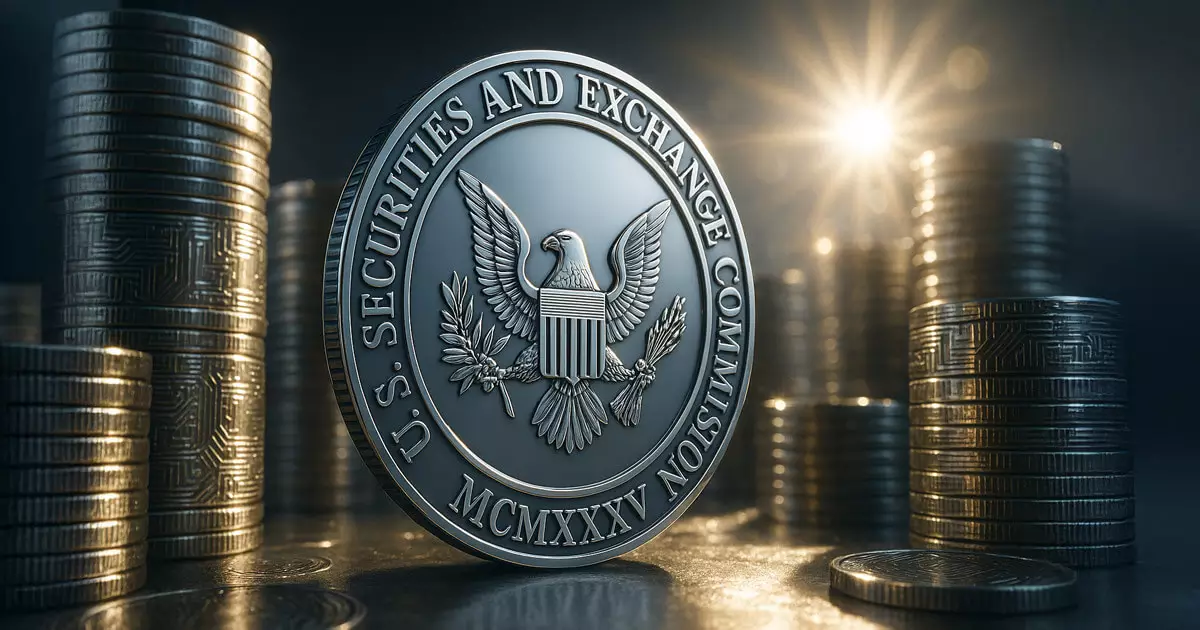The U.S. Securities and Exchange Commission (SEC) recently made waves in the cryptocurrency world by issuing new guidance that suggests various forms of crypto staking do not fall under the category of securities. At first glance, this seems like a welcome shift in regulatory policy regarding a burgeoning field that has faced scrutiny from regulators for years. While this development may ease some of the anxiety surrounding crypto investments, it’s vital to approach this news with a critical lens, assessing both the implications and the motivations behind the SEC’s decision.
According to the SEC’s Division of Corporation Finance, participants in staking activities—including self-staking and both custodial and non-custodial methods—are not required to register their actions with the agency, as long as they don’t fall under specific exemptions of the Securities Act. Additionally, the SEC clarified that enhanced features, such as slashing protection or minimum thresholds for staking, will not automatically categorize these transactions as securities offerings. This position attempts to provide a more secure environment for crypto enthusiasts who have been leery of engaging in staking due to regulatory uncertainty.
The Debate Among Commissioners
Despite at least partial agreement within the SEC, not all commissioners are on the same page. Commissioner Hester Peirce, who has long advocated for clearer and more favorable regulations for cryptocurrency, supported the new guidance, calling it essential for fostering an environment where blockchain technology can thrive. She embodies a viewpoint that sees regulatory oversight as necessary but urges a balanced approach that does not stifle innovation.
Conversely, Commissioner Caroline Crenshaw expressed concern that the SEC’s interpretation dismisses established legal frameworks. Crenshaw’s warnings about the implications of overlooking the Howey Test—the cornerstone of U.S. securities law—may signal a chasm in regulatory philosophy at the SEC. By suggesting that the guidance lacks a rigorous legal basis, Crenshaw raises valid concerns that warrant further discussion. Is the SEC’s stance a visionary leap toward a progressive future, or merely a prelude to tumultuous legal battles in the uncertain waters of crypto regulation?
Impact on the Crypto Ecosystem
The SEC’s decision could significantly reshape the landscape of crypto investments, particularly in the context of Ethereum exchange-traded funds (ETFs). The delineation of staking as a non-security may unlock new opportunities for funds, allowing them to stake Ethereum and potentially tap into a fresh revenue stream. But even as cool heads prevail over the regulatory landscape, complexities remain—specifically with the Internal Revenue Service (IRS) and its treatment of staking rewards.
What remains irrefutably clear is that the SEC has the power to influence the trajectory of technological innovation in this space. However, there’s an underlying concern that such regulatory shifts might not entirely protect users or instill confidence. The regulatory approval may pave the way for institutional investment to mature, yet it could also create a marketplace rife with confusion if the IRS fails to provide timely clarifications regarding staking rewards.
The Broader Regulatory Landscape
As the cryptocurrency sector grows exponentially, it becomes increasingly apparent that the regulatory framework will need to evolve continuously. The SEC’s recent guidance could be seen as a positive step, but we should approach this development recognizing the pressures and opportunities that have fueled this change. The crypto community longs for clarity, yet the nuances of regulation often tell a more complex story.
In a sense, the SEC’s decision serves as a litmus test for the future of cryptocurrency regulation in America. Will it promote innovation and investment, or will it succumb to the pitfalls of overreach and distrust? This is where we must remain vigilant. The balance between investor protection and fostering an environment conducive to technological advancement is tenuous, and every new directional change at the SEC could tip the scale dramatically.
Indeed, while the immediate implications of the SEC guidance appear favorable, one must not overlook the potential long-term consequences. Factors such as regulatory consistency, tax implications, and investor sentiment are intricately linked. Without careful navigation and clear communication from all regulatory bodies involved, the much-anticipated embrace of cryptocurrency could easily turn into a complex maze fraught with challenges.
As we digest the ramifications of this latest guidance, it serves as a reminder that the crypto world, much like the technology itself, is in a constant state of flux—demanding not just our engagement, but our critical analysis as well.

